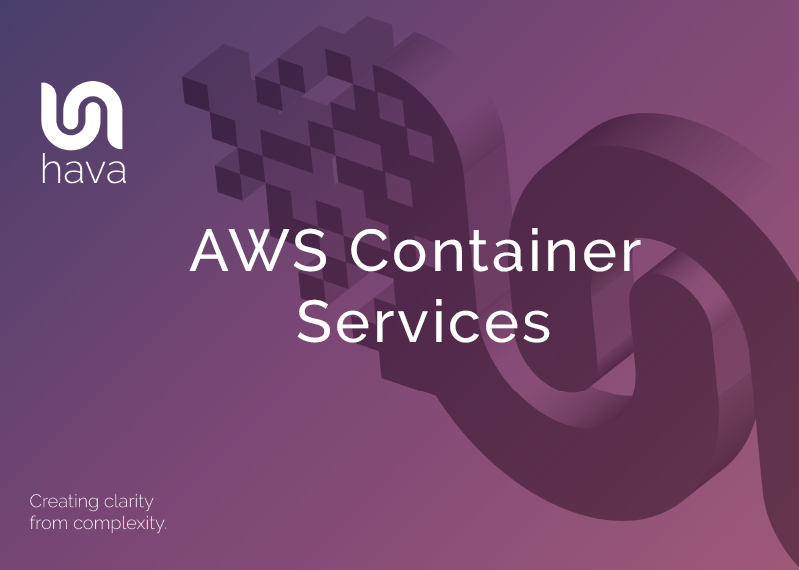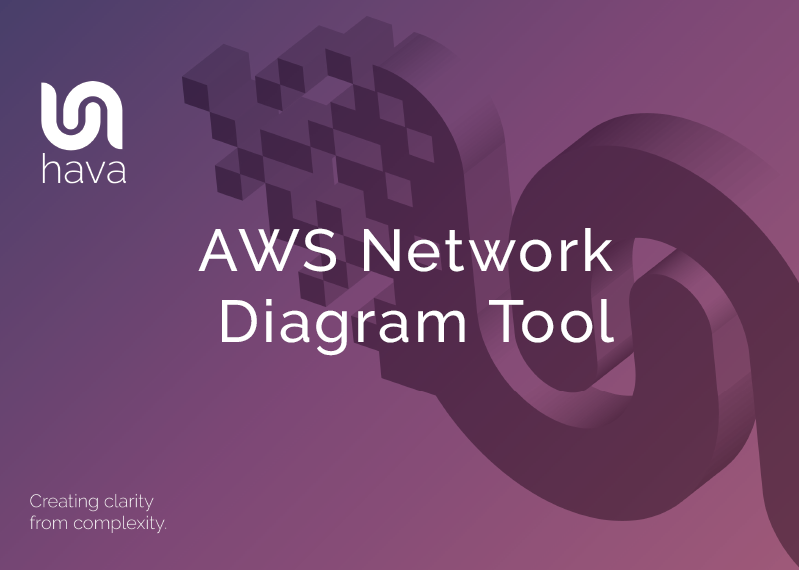
Accurate network topology diagrams play a major part in monitoring and internally communicating the design of well engineered AWS infrastructure.
The problem has always been the time it takes to manually draw diagrams. Depending on the complexity of your network It can take days or even weeks. Then of course, you need to spend even more time keep the diagrams up to date. We know this because the team behind Hava are engineers that come from a cloud consulting background.
We were faced with the same problems you face. When you take on existing infrastructure or need to deploy new infrastructure as part of a new application or maybe while on-boarding a new managed services client the very first thing you need to establish is what does ground zero look like. What resources are configured, what VPCs do they reside in, what Availability Zones house them, what does the security surface look like.
When you know that, then you can commence the design work to make it faster, highly available and more secure, or work out how do integrate a new project without breaking anything already in production.
As a project manager, a logically laid out AWS network diagram of your development environment allows you to see at a glance whether the architect's design has been implemented as expected. With everything visually laid out, you can spot the weak points and to know what to expect if say one of your availability zones experiences an outage.
The thought of firing up your AWS console(s) to start to manually map out your environments with a drag & drop diagramming tool is something nobody gets excited about, which is probably why accurate network topology diagrams are rarely prioritised.
Then of course, the minute you complete the diagrams, something changes and you have to analyse the implications and update all the diagrams to reflect the change. With the numerous approaches like deploying infrastructure as code, or getting AWS to autoscale various resources.
This process can take days or even weeks for larger environments, especially if multiple AWS accounts and environments are involved.
Back when we were providing cloud consulting services, we would routinely take several days or weeks to establish an accurate picture of what a new client's AWS network infrastructure looked like.
We also knew that the information we needed was available in the config data and could be used to build an AWS Network Diagram Tool to reduce the process from days or weeks down to a few seconds (or minutes for large environments)
Initially getting the infrastructure mapped was the primary focus which was achieved with the Hava Infrastructure View.
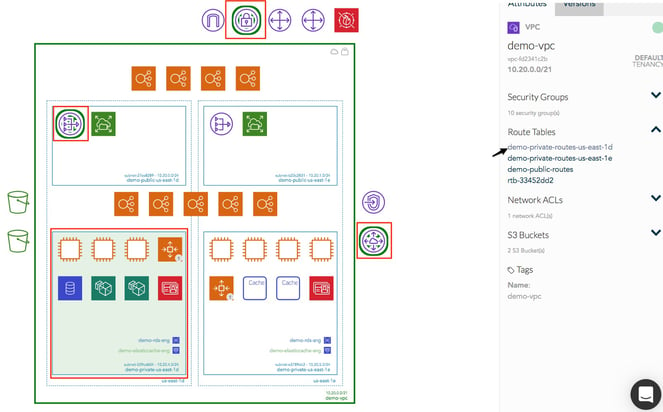
The Infrastructure view lays out your AWS VPCs grouped by availability zones. The diagrams also displays both internal and external resources.
The diagram is interactive. Selecting any of the resources on the diagram changes the attribute panel on the right which allows you to take a deep dive into the resource settings like security groups, IP ingress/egress ports, connected storage and so forth. The diagrams also display the estimated costs of each resource which are totalled for the entire environment.
We then thought about the relationships and connections between resources so created the ability to toggle on the ability to view connections.
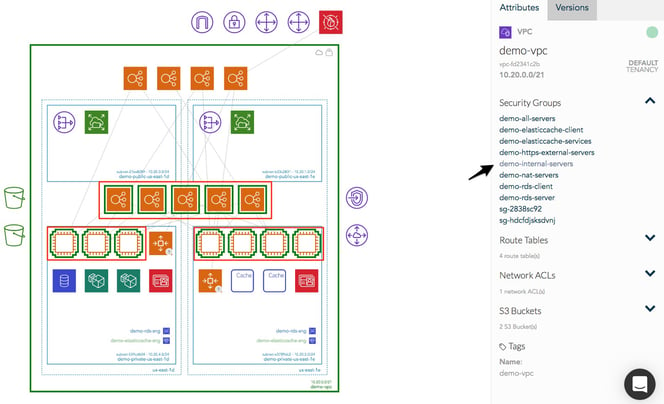
Early on in the development of hava.io, we decided to keep the diagrams clean and free from non essential resources like network interfaces or WAF rules that could flood the diagrams making them messy and confusing.
Although these less important components were not on the diagram, we did need to know about these 'non-visualized' components, so we designed the AWS Network Diagram Tool to create the "List View". The List View is an extensive data set that lists all the resources discovered in your AWS configuration files. This view lists both visualized and non-vizualized resources along side the estimated costs per listed resource.
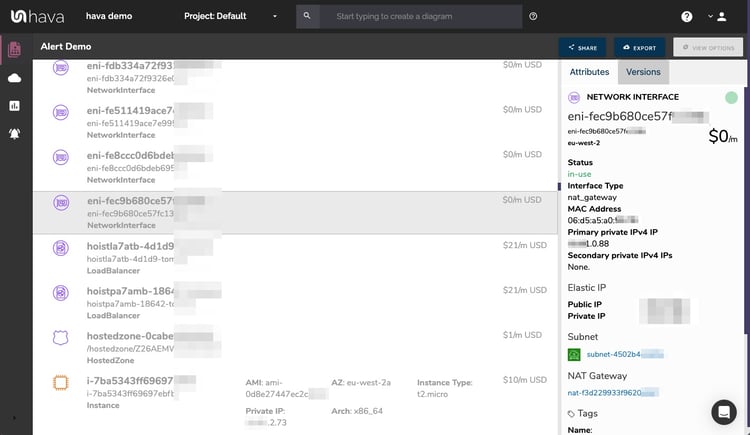
One of the major benefits of the list view is the ability to sort the list by descending cost to show what resources make up the bulk of your estimated cloud spend which should help when you are looking to save cloud costs.
We also added the ability for you to export the list in CSV format which CFO's and accountant seem to enjoy.
AWS Security Diagram Tool
The Security View was next on the agenda. We already had the config data and relationships coming back from AWS so our security team asked if we could visualize the security relationships the same way we were able to visualize infrastructure. The challenge was accepted and the AWS Security View was born.
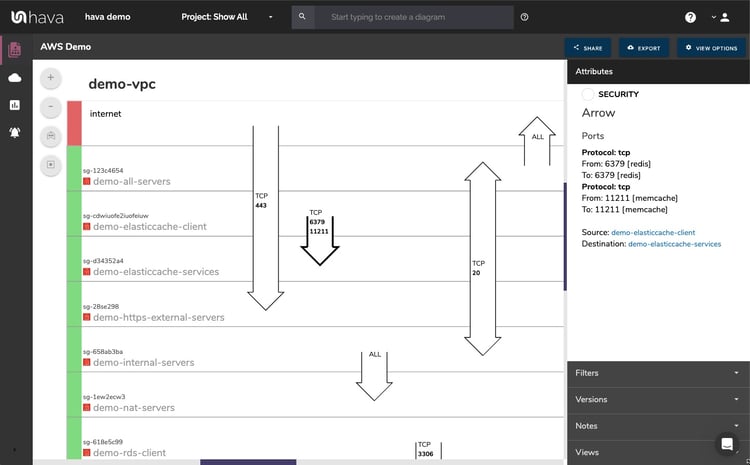
The security view will show you all of your security groups and will overlay the open ports and how they traverse your network. You can select a security group on the diagram to see all the connected resources in the attribute pane, as well as the ingress and egress port numbers and associated IP addresses.
This high level view makes some security config issues obvious.
The security view is truly unique and is a result of a team of industry practitioners knowing exactly what information is important to enable effective security monitoring.
One of the benefits of having a team of actual cloud engineers behind a product like hava.io as opposed to say a drag and drop flow chart drawing package solution, is that we are always close to the market. If we don't pick up new technologies and methodologies first, then our customers will, and are sure to fire in feature requests which we endeavour to integrate into Hava quickly.
This is evidenced by the rising popularity of AWS Container Services. As more dev teams embrace the solution of containers to provide portability of software between environments we created the container view.
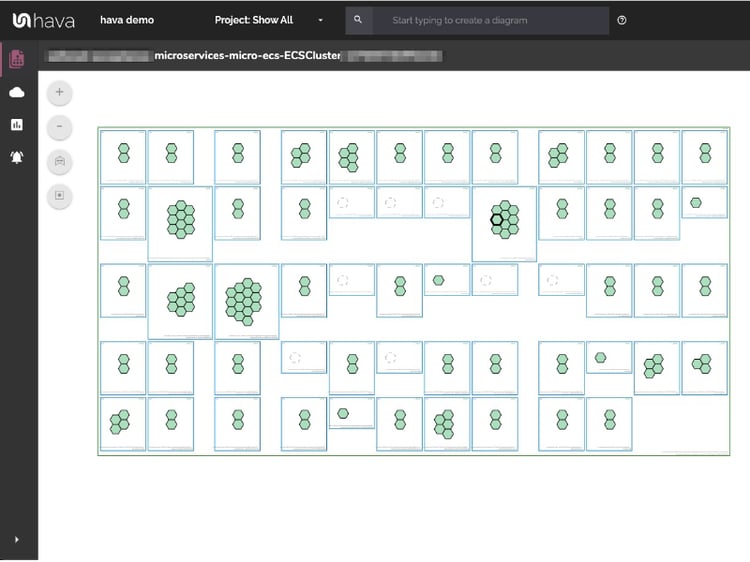
The container view visualizes your ECS Services and the contained ECS tasks inside an ECS Cluster.
AWS ARCHITECTURE DIAGRAM VERSION COMPARISON
Hava continuously scans your AWS architecture and when changes are detected a new diagram set is automatically generated. The superseded diagrams are not discarded or overwritten. Instead they are moved into version history. Still fully interactive.
What this means is you can view your cloud architecture at any point in time and also leverage Hava's revision comparison (Diff Diagrams) to quickly identify what has been added or removed between the two diagram dates.
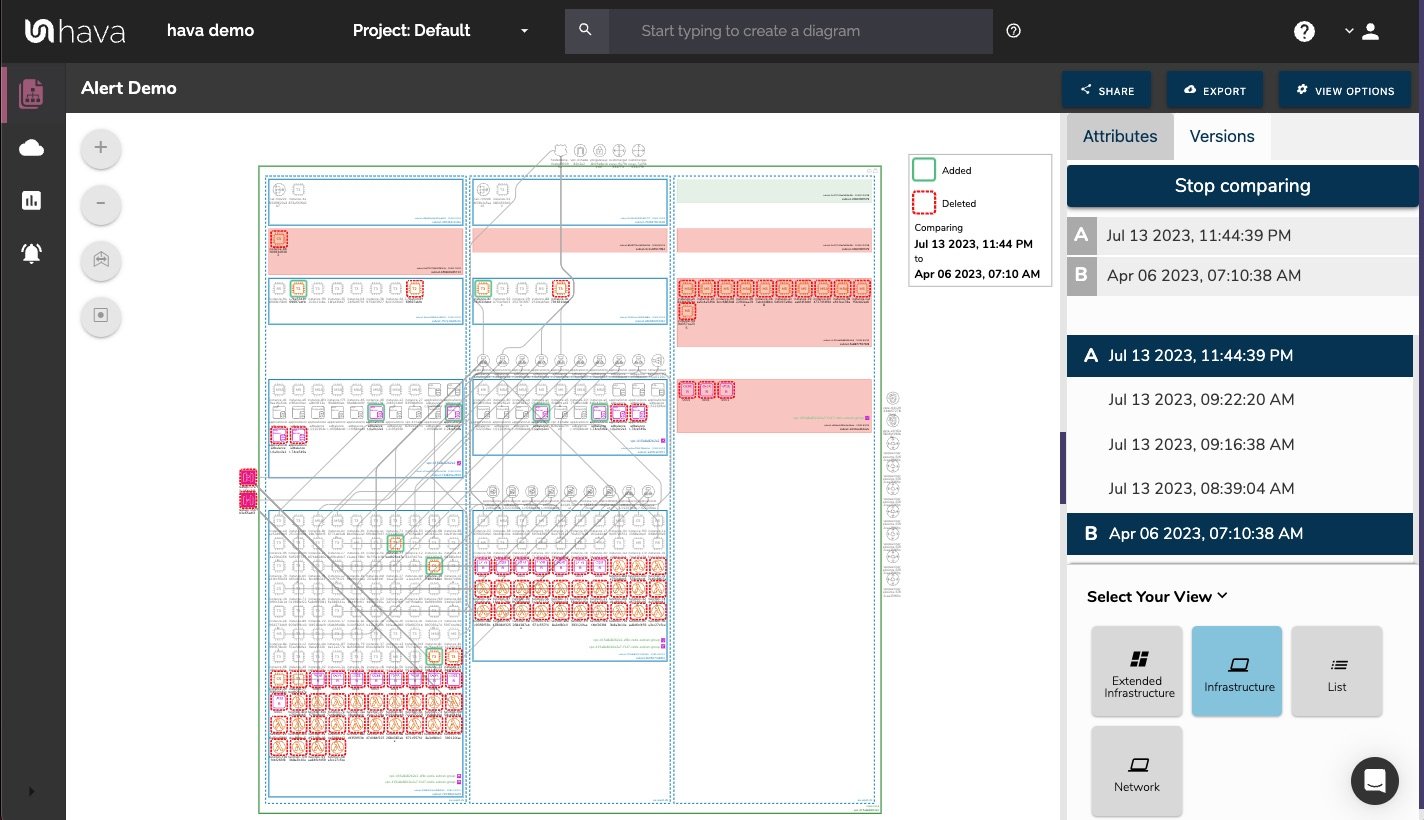
So you can easily identify all the changes made since your last compliance audit, or see what changed yesterday that is causing unexpected network or application errors.
AWS ARCHITECTURE MONITORING
While diff diagrams are super helpful in diagnosing changes after the fact, you may want to keep on top of changes as they happen.
Hava's architecture monitoring alerts will let you know the minute a change is detected. You simply nominate the environment you wish to monitor and add a group of recipients to receive the alerts. When a change is detected like the addition or removal of a resource, Hava will send each recipient a diff diagram showing the changes.
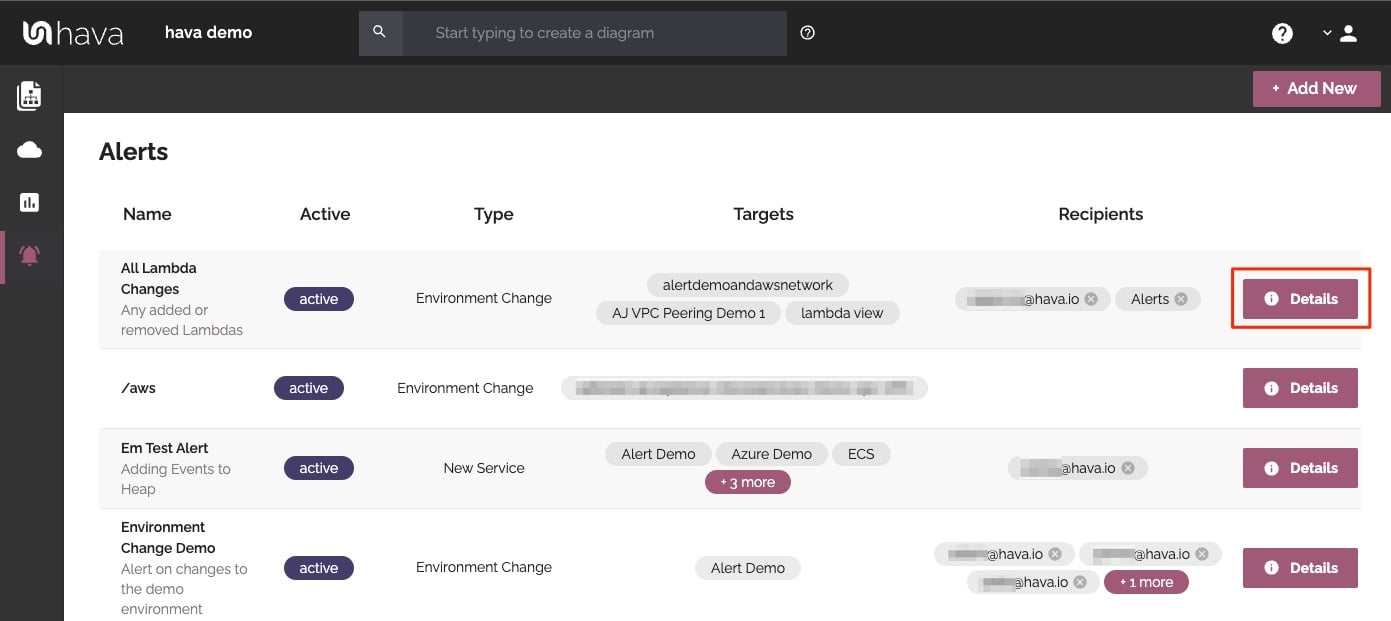
Now you and your security team can be across every change as it happens so you can assess and take action if required.
ENVIRONMENT DIAGRAM NOTES
For every architecture diagram generated you have the ability to add text comments. This serves as a rolling dialogue your team can contribute to that may better explain elements of the diagram or bigger picture concepts related to the diagram.
Notes are accessed from the accordion menu within the attribute pane.
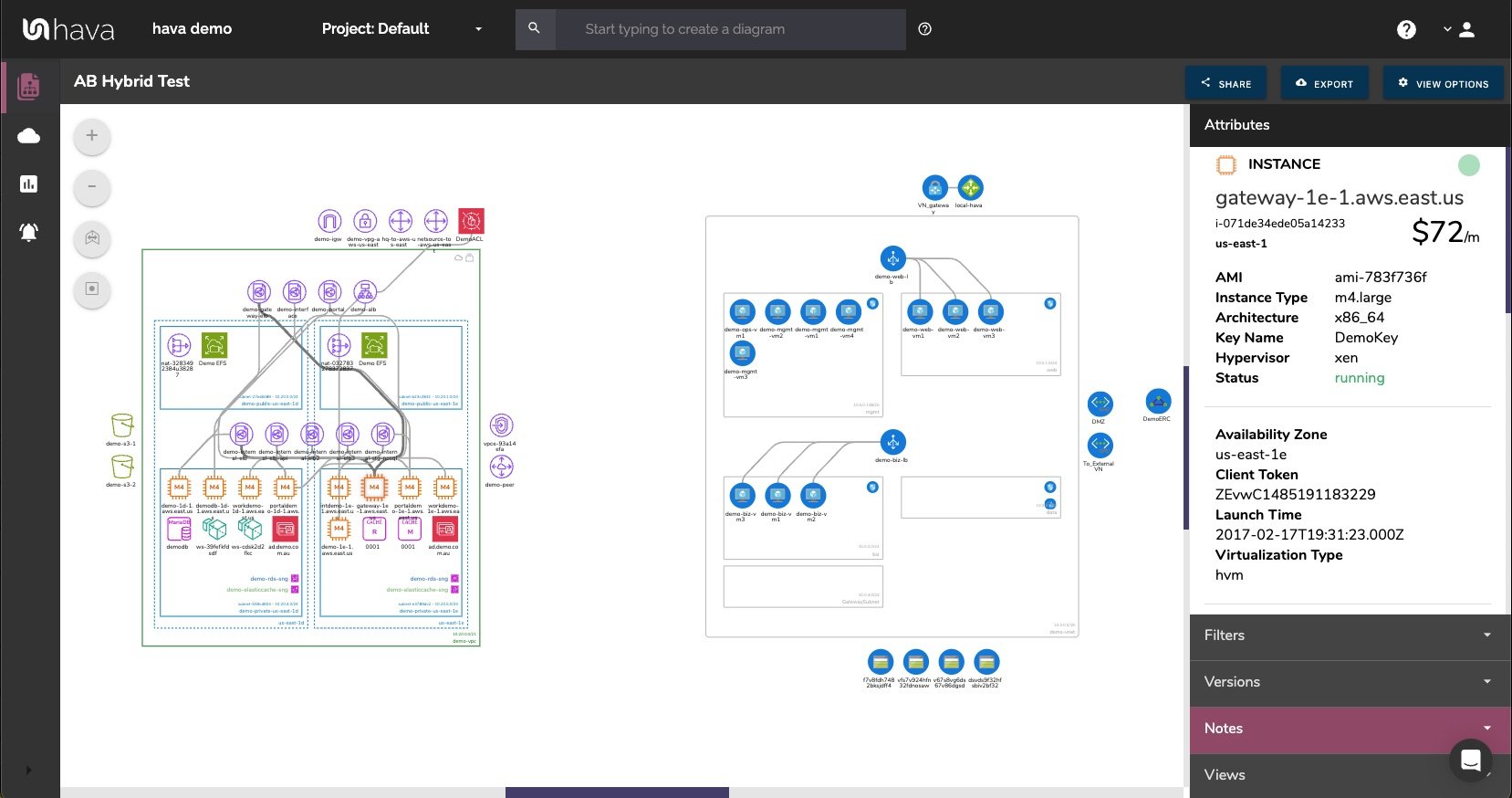
New notes are added to the top of the list so they are stored in chronological order.
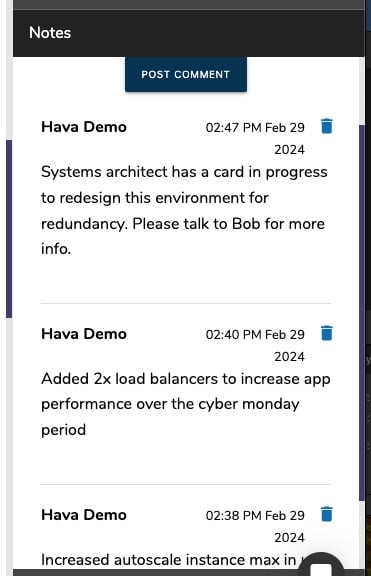
Whichever diagram or view makes the most sense or delivers the information your team needs to build and manage your environments, the upside to using a hands free automatic AWS Network Diagram Tool like hava.io is that your diagrams are sourced directly from your AWS configuration, so nothing is missed out and nothing can be added by mistake.
What you see is from the source of truth, always accurate and always up to date.
When your configuration changes, so do the diagrams. No human interaction required. The diagrams that are automatically replaced are archived in a version history. You can open up the historical diagrams at any time you like. They are fully interactive so you can compare old configs to new ones to find out what changed in the event of a problem or compliance audit.
The diagrams generated by Hava are also exportable. You can produce an AWS architecture PDF or a JPG for inclusion in your reporting as well as CSV and JSON.
How to generate an AWS Network Diagram
There are currently two options for using Hava to generate your cloud infrastructure diagrams.
Option 1: Hava SaaS
The SaaS option is by far the quickest and easiest way to start visualizing your AWS cloud infrastructure.
You simply create an AWS cross account role with read only permissions, then log into hava.io and connect your AWS account. Hava will read your AWS config data and render the diagrams and start to track any changes for audit purposes.
A 14 day fully functional trial is available (along with demo data) so you can try Hava for yourself. At the time of writing, no credit card is required to take the trial.
Option 2: Self Hosted
The self hosted option allows you to run Hava from within your own AWS infrastructure. If you have particular security or enterprise policies that prevent the connection of 3rd party applications to your cloud environments, then self-hosted may be the solution.
Both options are identical in functionality, but you will need to contact our support team to organise a self-hosted solution.
We recommend requesting a one on one demo with our sales team if you would like to see Hava in action and explore the self-hosted option.

You can contact us via sales@hava.io or jump into a free trial here:




